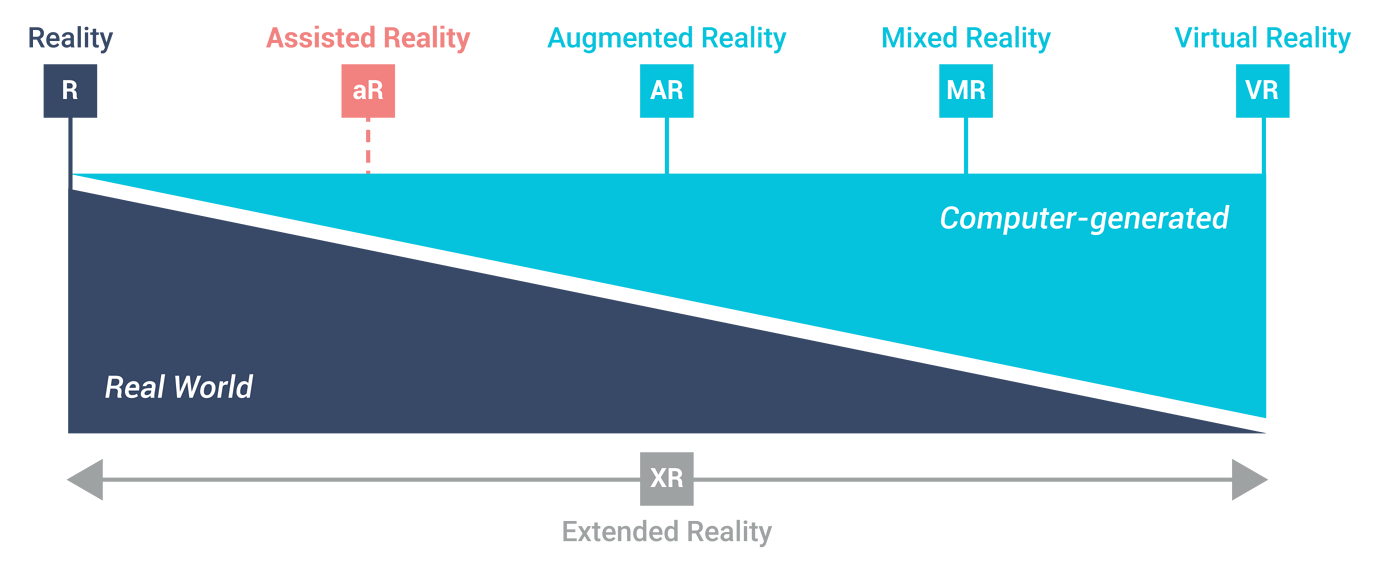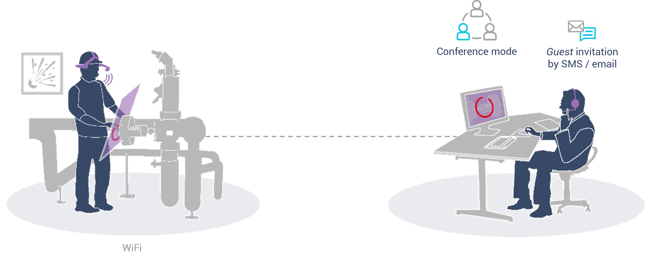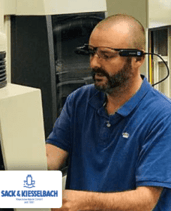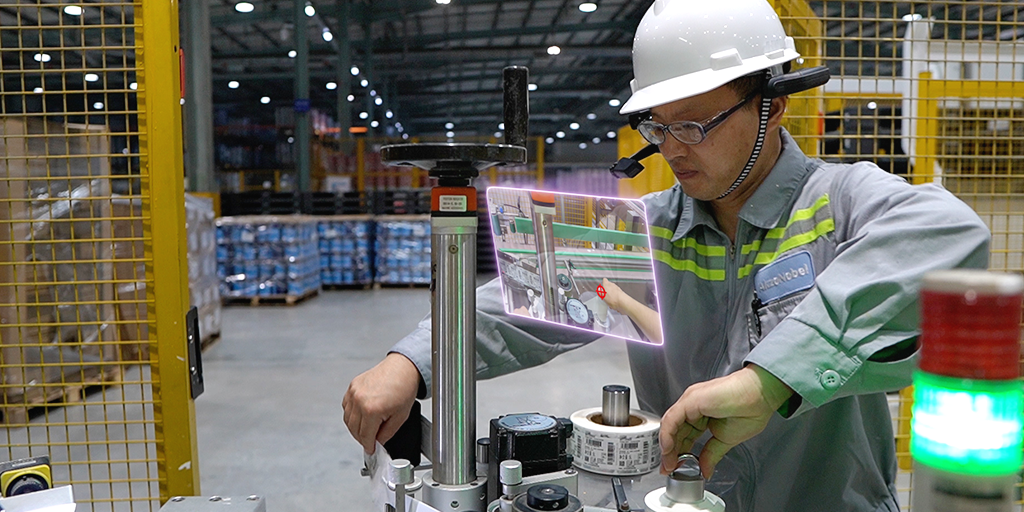Today, we are in the 4th industrial revolution and wearable technologies promise to unlock the potential for businesses that want to keep up with this industry.
The Extended Reality market is growing rapidly and promises to be the next great leap to boost workers' productivity. Today, let's talk about assisted Reality technologies and smart glasses, where users can free their hands to dedicate to core tasks and still get the contextual information within the field of view.
What is assisted Reality?
Abbreviated as aR, assisted Reality is a technology that superimposes information of the real world on the user’s view without blocking the user’s vision. It is best experienced using smart glasses or other wearable technology.
It combines:
-
Software
-
A head-mounted display
This game-changing technology is not new and has been used by the military for decades but recently it has become affordable to the broader public. Many industries are adopting industry 4.0 to drive digital transformation, but they heavily rely on legacy methods and tools. assisted Reality solutions can help them transfer and retain the vital knowledge from the experienced with many more possibilities.
For instance, a helicopter mechanic might have to work on parts that can be a few meters off the ground. Climbing up and down to get technical documentation can be tiresome. This technology helps technicians to access and read the relevant information on a head-mounted display, keeping both hands free to hold tools and hereby ensuring worker’s safety.
What is the difference between Augmented Reality and assisted Reality?

assisted Reality gives users access to relevant information in their immediate field of view while Augmented Reality uses computer-generated and digital content to create an interactive experience within real-world environments.
assisted Reality may sound less glamorous, but this remote access technology is more practical and accessible.
To get more information about this topic, refer to our prior blog on XR, VR, MR, AR and aR which technology to choose for your business.
How assisted Reality support works?

- Step 1: Onsite technicians connect with a remote expert using smart glasses or any handheld device, with the help of assisted Reality software.
- Step 2: The expert can see exactly what the technician is seeing onsite in real-time.
- Step 3: The expert can guide the technician through images, annotation, and resources.

What can you do with assisted Reality?
Both industrial and medical fields have already embraced assisted Reality solutions to boost employees' productivity and provide efficient services. Here are some examples to illustrate.
Optel is a leading global provider of supply chain traceability systems. Their skilled field engineers use the XpertEye assisted Reality solutions to guide their customers during the integration of Optel's automated vision inspection, without having to travel on-site.
Francois Lemieux, Technical support from Optel Group- Canada uses XpertEye solution to provide virtual technician support to their customers and field technicians. "It allows us to give a faster response time, to improve the communication and it allows the person on the other side of the line to have their hands free as they operate the machine".

assisted Reality is widely used in remote inspection and auditing. For instance, by combining the voice-controlled RealWear HMT-1 wearable headset with the XpertEye platform, KPMG auditors were able to communicate effectively with complete inventory counts. Check out the full story here.

Sack & Kiesselbach, a global leader in the manufacture of medal presses and hydraulic coins were looking for a way to make remote maintenance easier. Markus Schlein, CEO of the company says, “Thanks to smart glasses, we can look over the shoulder of the engineer, give him instructions, and control immediately if the instructions are implemented correctly”. Read the full case study here.
Breaking barriers of time & space
Connectivity through digital technology has broken down the barriers of time and space. Now, doctors can conduct remote surgery living in their own space. A ground technician can monitor his equipment safely by simply using smart glasses. A simple assisted Reality solutions collaboration can create an impact on the way we communicate and transfer knowledge digitally. Digital communication has a lot to give, and we are already carrying the potential to change the face of tomorrow.

